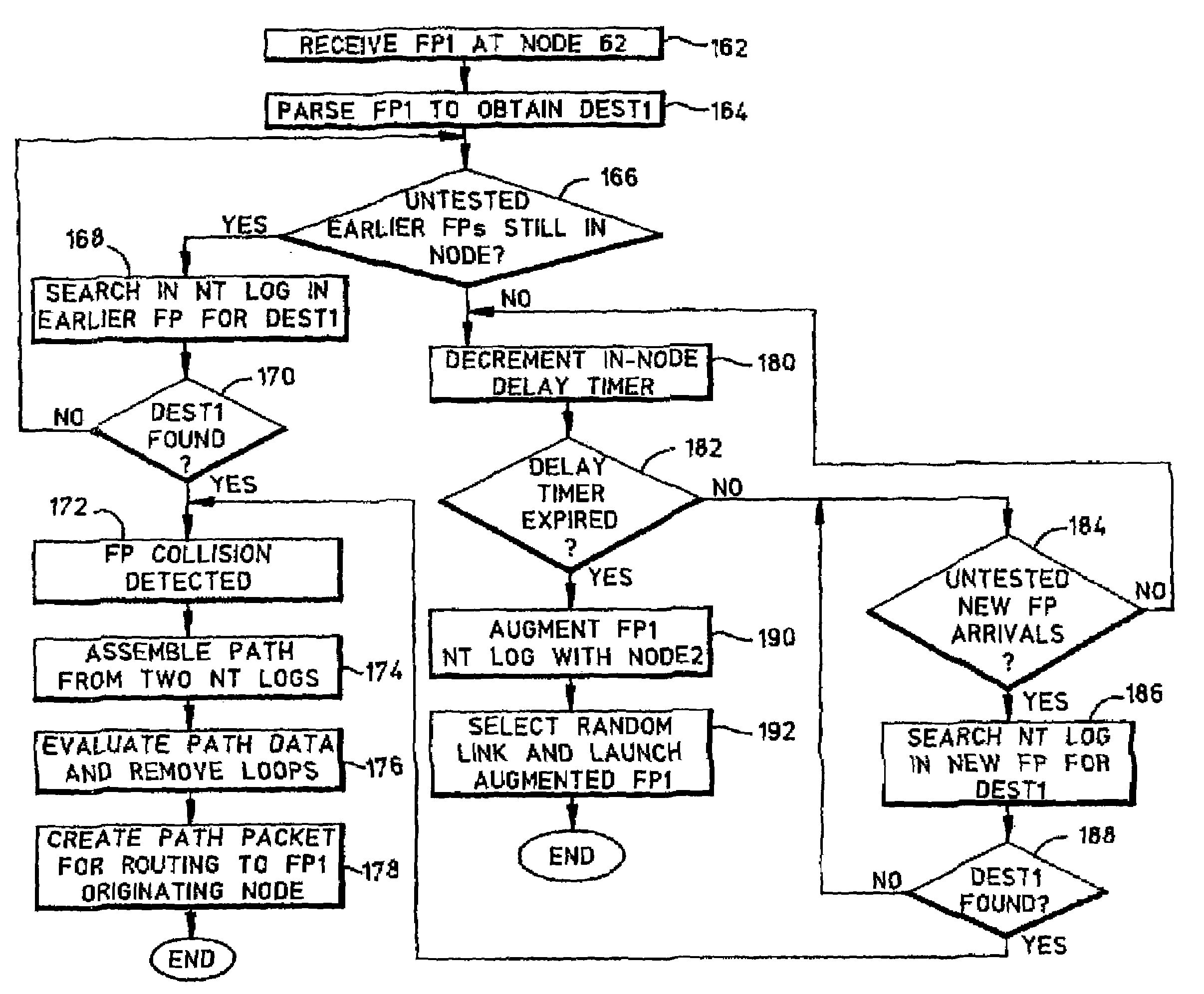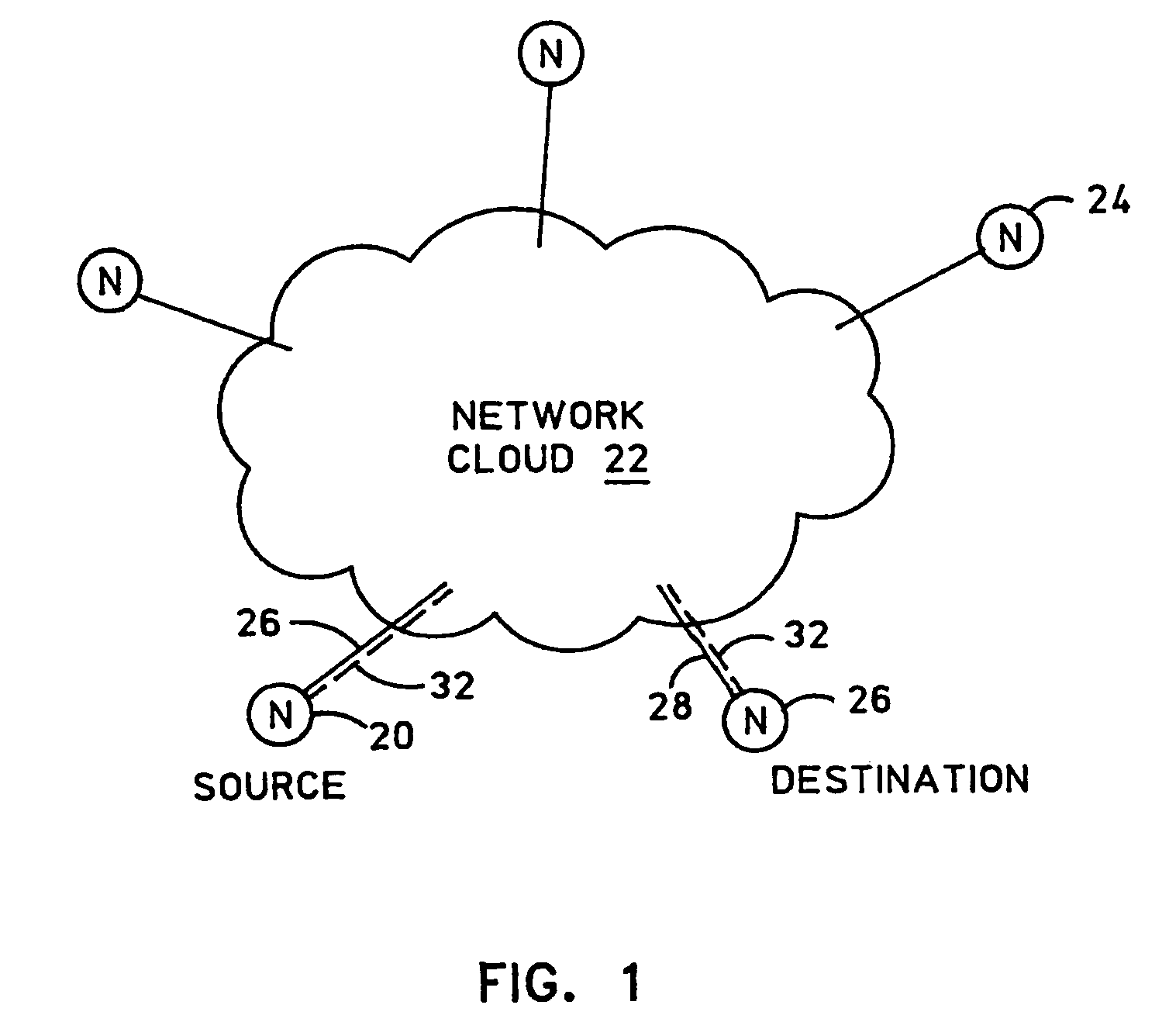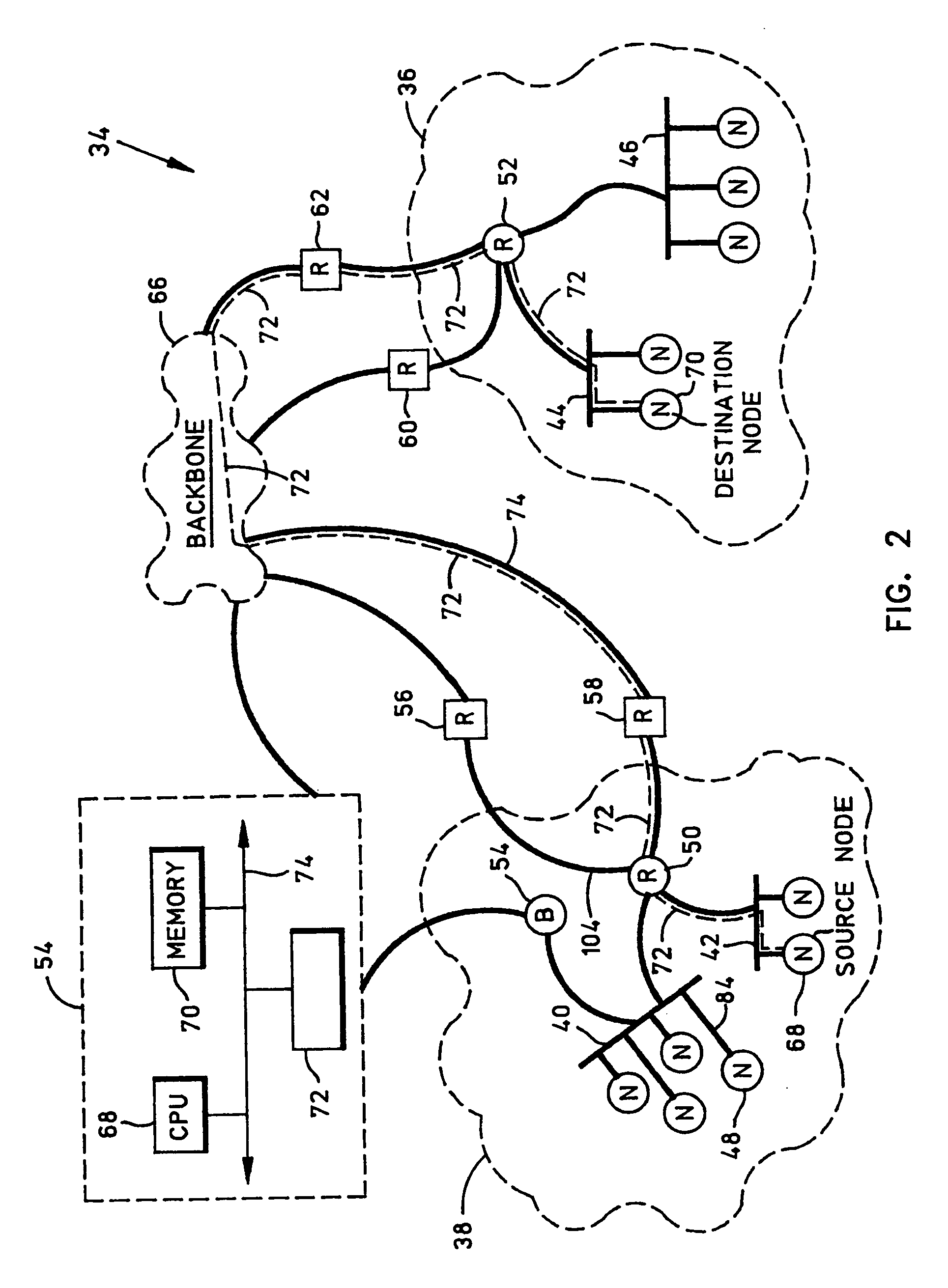Adaptive path discovery process for routing data packets in a multinode network
- Summary
- Abstract
- Description
- Claims
- Application Information
AI Technical Summary
Benefits of technology
Problems solved by technology
Method used
Image
Examples
Embodiment Construction
[0035]FIG. 2 is a block diagram of an exemplary embodiment of a network 34 implementing the path discovery system of this invention. Network 34 is hierarchically organized to embrace a collection of domains exemplified by the domains 36–38, each containing a number of local computer networks (LCNs) exemplified by the LCNs 40, 42, 44 and 46, each having one or more endnodes exemplified by the endnode 48. As used herein, LCNs may be, for example, local area networks (LANs), metropolitan area networks (MANs), wide area networks (WANs), etc. The endnodes are, typically, computers (workstations and servers) but may be any type of device that can include a network interface card (NIC), such as a printer or modem. LCNs 40–46 are connected by intermediate nodes, such as the intradomain routers 50, 52, and 54 and the interdomain routers 56, 58, 60, 62 and 64. The backbone 66 is the highest hierarchical level in network 34 and consists of a large plurality of interlinked nodes (not shown), in...
PUM
 Login to View More
Login to View More Abstract
Description
Claims
Application Information
 Login to View More
Login to View More - R&D
- Intellectual Property
- Life Sciences
- Materials
- Tech Scout
- Unparalleled Data Quality
- Higher Quality Content
- 60% Fewer Hallucinations
Browse by: Latest US Patents, China's latest patents, Technical Efficacy Thesaurus, Application Domain, Technology Topic, Popular Technical Reports.
© 2025 PatSnap. All rights reserved.Legal|Privacy policy|Modern Slavery Act Transparency Statement|Sitemap|About US| Contact US: help@patsnap.com



